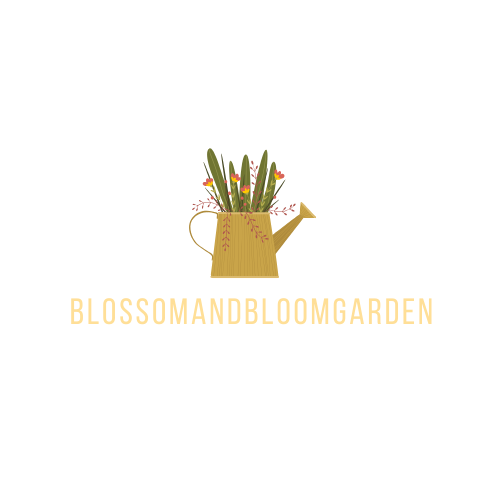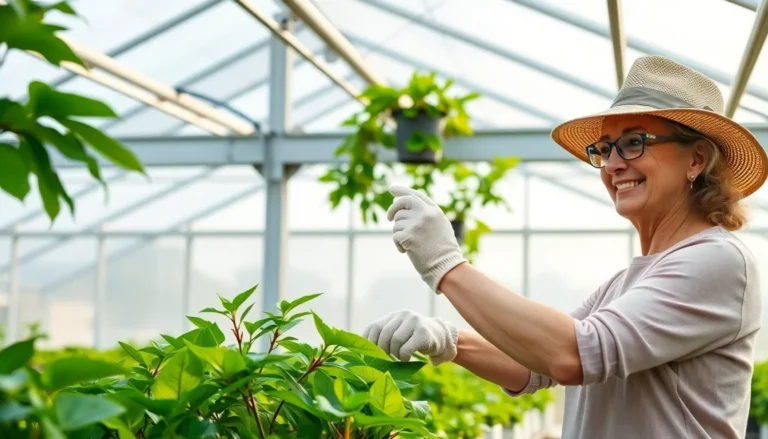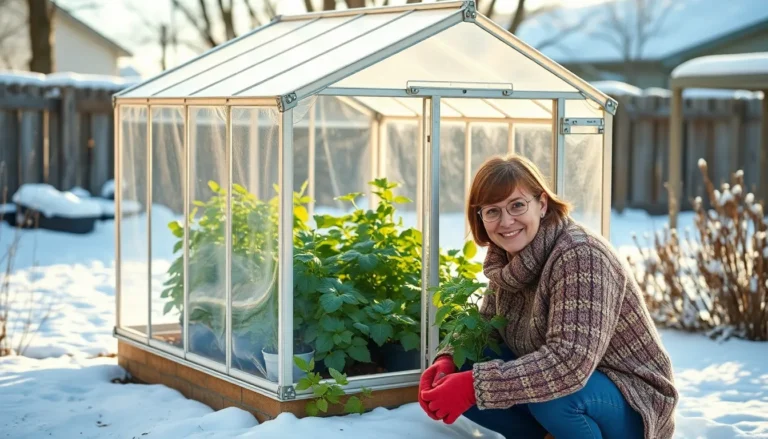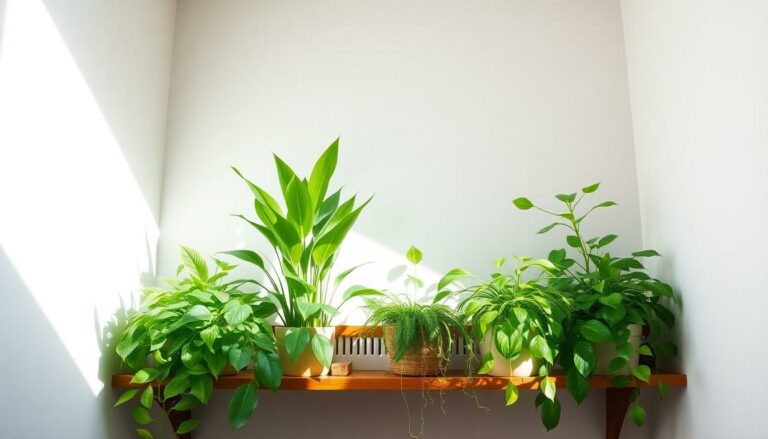The Best Fluffy Pancakes recipe you will fall in love with. Full of tips and tricks to help you make the best pancakes.
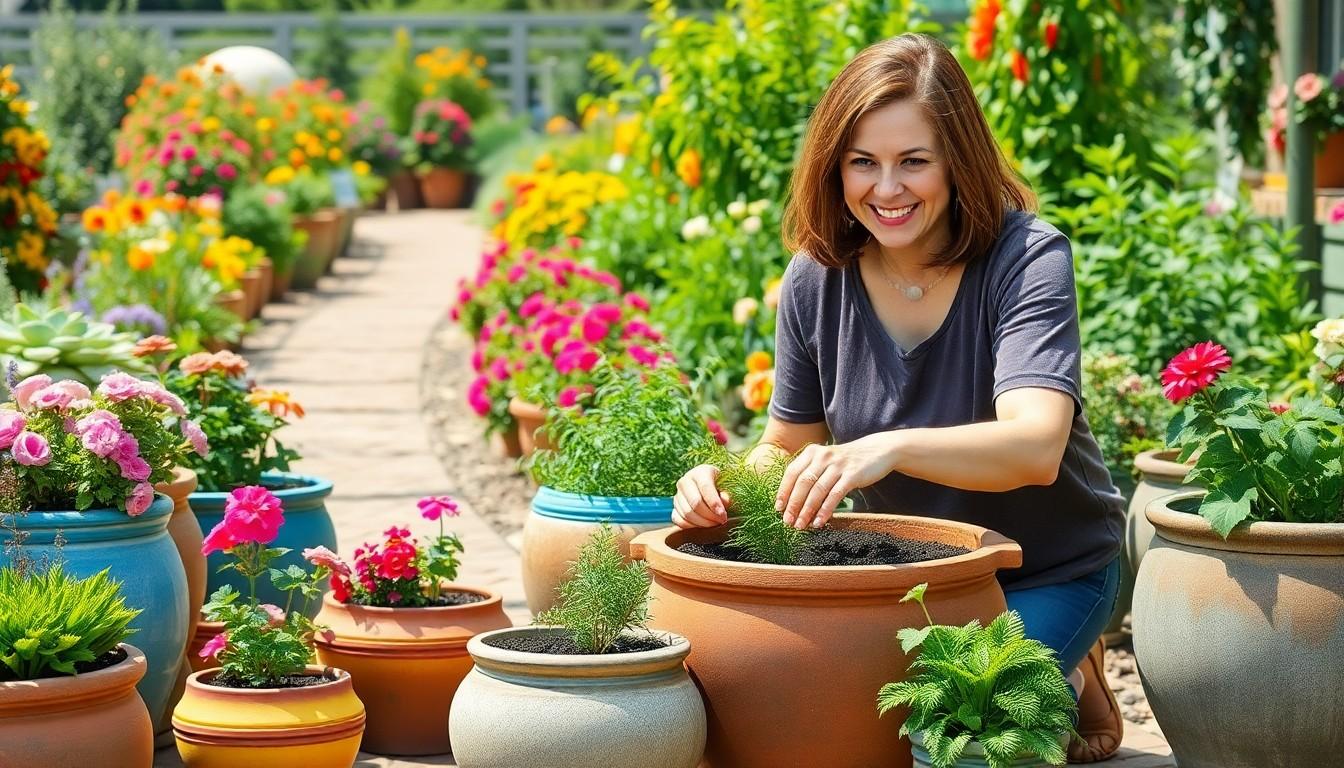
Planters for Outdoor Plants: Boost Your Garden’s Style and Health Today
When it comes to outdoor plants, the right planter can make all the difference between a thriving garden and a sad patch of dirt. Think of planters as the stylish outfits for your leafy friends. They deserve to look good while soaking up the sun and showing off their vibrant colors. After all, who wouldn’t want their plants to strut their stuff in something chic?
Overview Of Planters For Outdoor Plants
Choosing the right planter significantly impacts outdoor plant health. Various materials, including clay, wood, and plastic, provide different advantages. Clay planters, for instance, offer excellent breathability, allowing roots to access air. Wood planters, on the other hand, provide natural insulation, helping to regulate soil temperature.
Size matters when selecting planters. Large planters accommodate larger plants and deeper root systems, promoting growth. For smaller plants, compact planters work effectively without taking up excessive space. The shape also influences aesthetics and functionality. Round or square planters can fit various design preferences, creating visual appeal in any garden setting.
Drainage is vital for healthy outdoor plants. Planters with drainage holes prevent overwatering, reducing root rot risks. Several designs come with additional features, such as built-in trays that collect excess water. These add convenience and yet maintain plant health.
Color choices can enhance garden aesthetics. Brightly colored planters draw attention to plants, while muted tones blend harmoniously with natural surroundings. Patterns and textures further add a decorative touch, showcasing gardeners’ styles.
Functionality plays a crucial role in outdoor planters. Some planters come with self-watering systems, minimizing the need for constant care. Others are lightweight and portable, making rearranging easy according to seasonal changes.
Understanding the local climate is essential. Different materials withstand varying weather conditions, such as freezing temperatures or intense sunlight. Consequently, selecting planters suited to local environments supports plant vitality.
Investing in quality planters pays off. Durable materials withstand the elements, ensuring longevity and continued support for outdoor plants. Well-chosen planters serve not only as plant homes but also elevate the garden’s overall appearance.
Types Of Planters
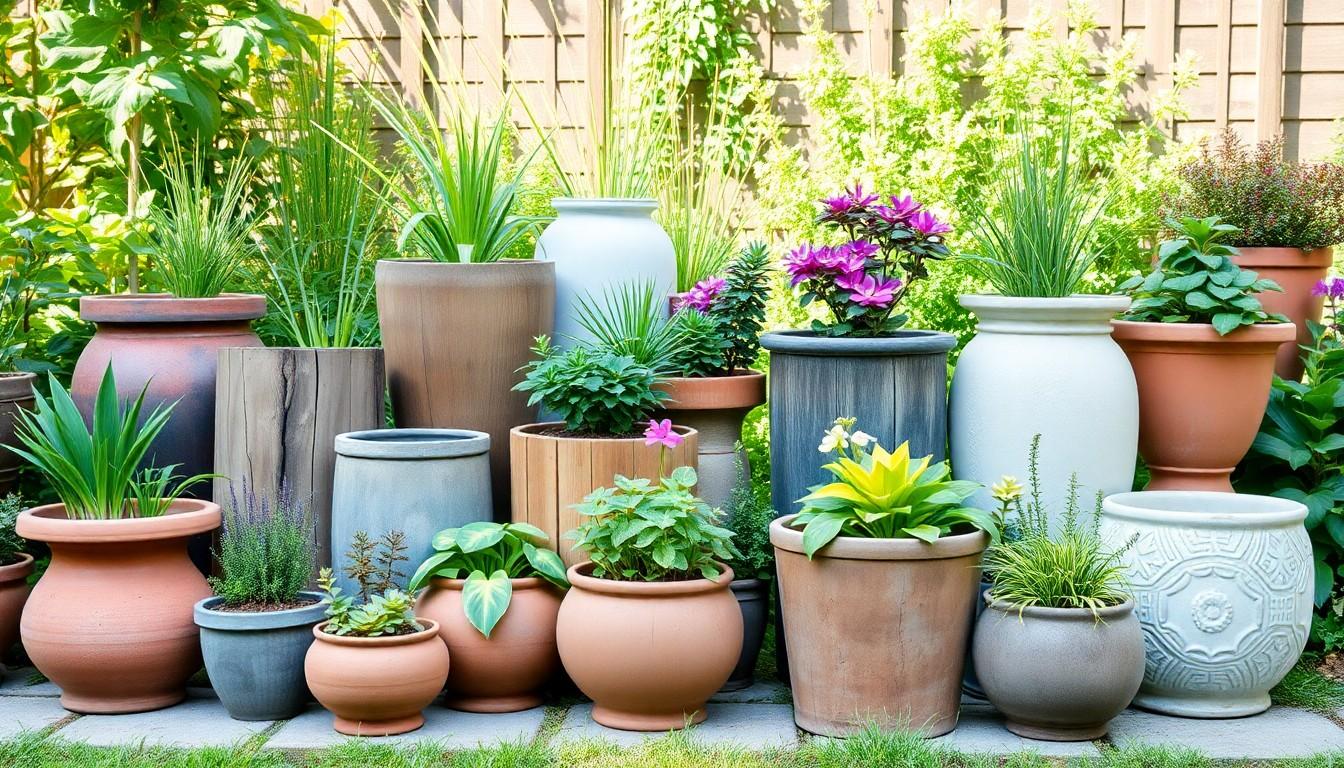
Choosing the right type of planter enhances both aesthetics and plant health. Different materials and designs cater to various gardening needs.
Material Options
Clay, wood, plastic, and ceramic represent common planter materials. Clay planters excel in breathability and moisture regulation, catering to plants that prefer consistent humidity. Wood planters provide natural insulation, making them suitable for various climates. Plastic planters offer durability and lightweight advantages, often featuring vibrant colors. Ceramic options add elegance but may require more care due to fragility. Each material impacts drainage and temperature control, affecting plant growth directly based on climate and environmental conditions.
Shape and Size Variations
Shapes range from traditional round and square to unique geometric designs. Round planters allow for 360-degree visual appeal, while square options maximize space efficiency. Size significantly influences plant health; larger planters support expansive root systems, promoting vitality. Smaller planters work well for compact plants and small spaces. Selecting the right shape and size ensures appropriate growth and enhances garden aesthetics, drawing attention to each unique plant.
Benefits Of Using Planters
Using planters significantly contributes to the overall health and appearance of outdoor plants. Thoughtfully selected planters provide numerous advantages for both plants and gardens.
Improved Plant Health
Breathe freely in clay planters enhances moisture retention, benefiting plants that thrive in stable humidity. Root growth flourishes when given adequate space in larger planters. Drainage holes allow excess water to escape, preventing root rot and ensuring healthy plant development. Materials like wood offer natural insulation, protecting roots from extreme temperature fluctuations. Proper airflow around the roots promotes vitality and growth. Each material selection directly impacts moisture regulation and nutrient accessibility. Planters with self-watering features provide added convenience, distributing water consistently. Overall, planter choices create an optimal environment for plants to thrive.
Enhanced Aesthetics
Visually appealing planters elevate garden design and highlight the beauty of plants. Bright colors draw attention, creating focal points throughout the garden. Unique shapes, like geometric designs, contribute to innovative arrangements. Elegance fits ceramic options, adding sophistication to outdoor spaces. When choosing planters, consider materials that complement existing landscaping. A cohesive design unifies the garden, enhancing its overall appeal. Larger planters lend a more significant visual impact, while smaller options can create charming clusters. Strategically positioned planters attract attention, becoming a conversation piece in any outdoor setting. The right planter can transform a standard garden into an eye-catching oasis.
Key Considerations When Choosing Planters
Selecting the right planters involves understanding several key factors that affect both plant health and garden aesthetics. These considerations guide the choice toward effective options.
Drainage and Watering Needs
Drainage impacts plant vitality directly. Planters must feature adequate drainage holes to prevent water accumulation, which can lead to root rot. Proper watering is essential based on specific plant types; for instance, succulents require less frequent watering than tropical plants. Self-watering planters offer a convenient solution, delivering consistent moisture without frequent monitoring. Materials that retain moisture well, like clay, enhance watering efficiency. Evaluating the watering needs of individual plants ensures a thriving outdoor space.
Climate Compatibility
Climate significantly influences planter choice. Planters made from materials like wood or ceramic provide insulation against temperature fluctuations, helping to stabilize root environments in varying weather conditions. A planter’s design must also consider local climate, as certain materials resist extreme heat or frost better than others. Plastic planters, lightweight and durable, can withstand harsh weather elements while maintaining garden aesthetics. Understanding the climate fosters informed decisions, ensuring selected planters withstand seasonal changes, enhance plant growth, and elevate garden appeal.
Conclusion
Selecting the right planters is key to creating a thriving outdoor garden. Thoughtfully chosen planters not only enhance the aesthetic appeal but also promote plant health by providing the necessary conditions for growth.
From materials that offer insulation to designs that ensure proper drainage, each choice contributes to the overall success of the garden. By considering factors like size shape and climate compatibility, gardeners can create a beautiful and vibrant outdoor space.
Investing in quality planters pays off in both durability and visual impact transforming any garden into a captivating oasis.
